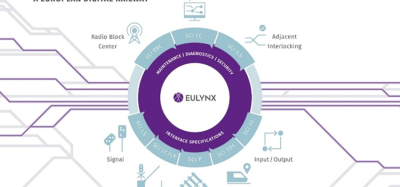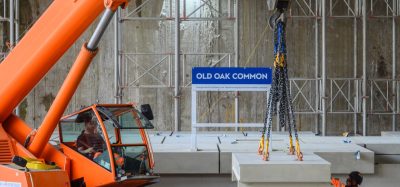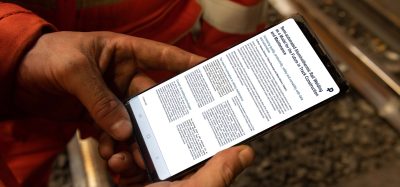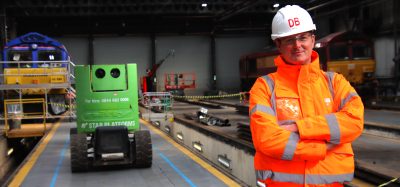Fibre optic sensing in railway infrastructure monitoring
Posted: 9 April 2019 | Ivan Vidovic - Graz University, Matthias Landgraf - Graz University | No comments yet
The Institute of Railway Engineering and Transport Economy at Graz University of Technology has vast experience in railway asset and lifecycle management and has collaborated with various infrastructure managers such as ÖBB, SBB and Bane NOR over the last 25 years. Here, Ivan Vidovic and Matthias Landgraf from the Institute examine the potential of distributed acoustic sensing for railway infrastructure monitoring and identify that using the permanent and continuous information delivered by fibre optic cables would be a major step forward for predictive maintenance; leading to higher availability on railway tracks.


RAILWAY infrastructure managers face various challenges in the world today. Ironically, the success of railway operations is one of the main challenges. An increase in traffic volume leads to both increasing wear of track components and shortened track closures for maintenance activities. On the one hand, these time slots are crucial for essential maintenance work in order to keep track quality at a required level and consequently prevent track closures and temporary slow orders due to track condition. On the other hand, blocking time slots for maintenance instead of operations can be very costly. It is thus crucial to increase efficiency in track maintenance in order to keep availability as high as possible, without neglecting necessary maintenance measures. This means the evaluation and assessment of a railway track is a decisive task for infrastructure managers. Moreover, in times of budget cutbacks, it is becoming more important to implement a sustainable and condition-based maintenance strategy referenced to lifecycle cost considerations.
Data availability
The base for a sustainable and condition-based maintenance strategy is the knowledge about track condition and the specific component responsible for the end of service life. For this, infrastructure mangers have several data sources, providing them with information on track condition with varying degrees of data quality and quantity, as shown in Figure 1.
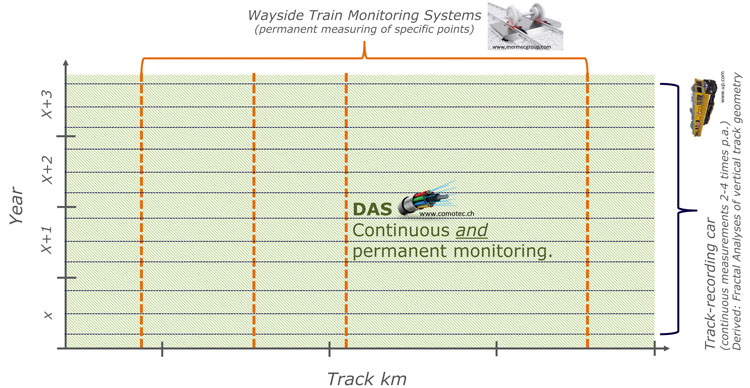

Figure 1: Infrastructure managers have several data sources, providing them with information on track condition with varying degrees of data quality and quantity
A track recording vehicle is the standard measurement device of any infrastructure manager. The vehicle assesses the entire network several times each year and delivers data of high quality and quantity (see Figure 1). Also, Wayside Train Monitoring Systems, located on specific points in a network, deliver permanent measurements for each train passing and monitors the condition of the rolling stock. As deployment of focal interest points with sensors have become very popular over the past few years it is possible to provide almost any asset with a sensor to deliver measurements for each train passing, but only for specific points.
This is where distributed acoustic sensing comes into play. For our project we use already-installed fibre optic cables. These are installed in bundles alongside railway tracks and since not all of them are used for telecommunication or signalling purposes the interrogation system makes use of one fibre out of the bundle to monitor the track. This highly innovative sensing technique delivers permanent and continuous data for each train passing for every point alongside track.
Distributed Acoustic Sensing
Currently, the measurements are used for train tracking and safety and security purposes. Since it is an acoustic signal this is the most obvious scope of application. In our work we focus on using the acoustic signal for assessing the condition of railway infrastructure.
Distributed Acoustic Sensing relies on the effect of Rayleigh backscattering, an elastic scattering process of light. The fibre optic cable itself represents the sensing element and it can be described as a listening device with thousands of ‘virtual’ microphones situated along the monitored asset.
With the current system we are capable of detecting, locating and classifying any activity taking place nearby or on the monitored asset by using any conventional telecommunication single mode fibre optic cable. The only additional equipment needed is an interrogator unit, located in a telecommunication room. The interrogation system reconstructs the acoustic signal, present along the monitored asset and distributed on an equidistant basis at thousands of locations. Depending on the activities and events taking place down an optical fibre, the system reconstitutes the acoustic signal from the observed backscattered light signal. First algorithms in the railway business were developed for train tracking and wheel flat identification. Moreover, recent tests under laboratory conditions have already shown the potential of this technology for condition-based maintenance strategies of railway infrastructure.
First results
Using the distributed acoustic signal for an assessment of railway track, the first step is to examine whether there is a difference in the raw acoustic signal regarding railway track condition. Since it is an acoustic signal, the hypothesis is that a train passing a track section in good condition and a track section showing poor condition leads to a different acoustic signal.
Consequently, the values within the raw acoustic signal should also differ between these two sections. Additionally, according to this theory the signal pattern among those two assets should differ when the same train passes these points. This also applies for a worn rail joint or crossing nose.
To demonstrate this, we have carried out a persistence spectrum of a train passing a worn rail joint. The utilised system has a sampling rate of 2,500 samples per second which means that we can carry out frequency analyses up to 1250Hz. The amount of a given frequency present in a signal is illustrated in a persistence spectrum. In basic terms, this is a histogram in a power-frequency space where a specific frequency appears brighter and ‘hotter’ for as long as it persists in the signal while the signal is evolving. The result of the described theory is depicted in Figure 2 where almost 14 seconds of the power spectrum of a passing train are illustrated. The Y-axis represents the frequency of the signal and the X-axis the time. When a train approaches and passes the specific point, as occurs in Figure 2 between second two and 12.5, higher frequencies are also present, and the train movement is made visible in the signal.


Figure 2:A persistence spectrum of a train passing a worn rail joint
Furthermore, this enables the depicting and determining of train formation. The depicted train formation consists of a locomotive and nine coaches. Moreover, following the assumptions made at the start, at least every single bogie and consequently each axle should be visible within the power spectrum when the train passes the rail joint. This can be explained by the fact that inhomogeneities – in this case a rail joint – lead to a specific impact of every passing axle. Due to different weight, the impact of the locomotive is higher compared to the axles of coaches.
The next step after finishing the data analyses for Distributed Acoustic Sensing is correlating this data to further condition and asset information (see Figure 3). These correlation analyses are carried out in order to elaborate on the following questions:
- Do different substructure conditions (for example, bridges and open track) show specific characteristics within the signal?
- Can we distinguish track sections with poor ballast condition based on distributed acoustic sensing
- How do different maintenance measures occur within the signal?
- Is the signal reproducible over time to predict future behaviour?


Figure 3: Data analyses of Distributed Acoustic Sensing
The results so far indicate that infrastructure condition can be assessed using Distributed Acoustic Sensing. As this is a new and highly innovative data source there is still some experimental research to be carried out before it can be used in daily business. Within the next steps in-depth analyses regarding signal characteristics of diff erent train types, weather situations, dynamic behaviour and further boundary conditions must be executed.
Generally, fibre optic cables deliver continuous and permanent information on railway tracks and they bring a very valuable addition to the results provided from the use of track recording vehicles, as this innovative approach would allow permanent behaviour monitoring between the measurement runs of track recording cars. This would be a major step forward for real-time predictive maintenance and would also lead to higher availability on railway tracks.
Biography




Issue
Related topics
Track Systems, Track/Infrastructure Maintenance & Engineering
Related organisations
Institute of Railway Engineering and Transport Economy at Graz University of Technology



